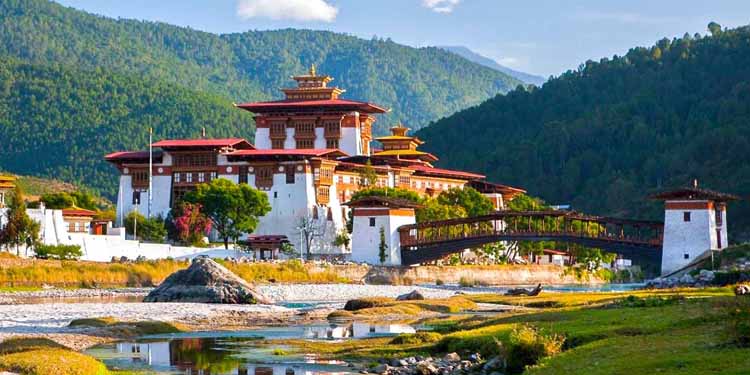Bhutan is a tiny nation hidden in the Himalayas and has its own distinct culture and customs. Bhutan is the one Buddhist kingdom in the world with Mahayana Buddhism and is the officially recognized religious system of Bhutan. Bhutan is often referred to as the country that thunders’ and is known as the happiest place in the world. Therefore, there are numerous Buddhist monastery, Dzong, monastery fortresses temples, shrines and temples etched across the country. Paro is the sole entry point into Bhutan by plane, and you arrive in Paro International Airport. Paro International Airport. The capital city of Bhutan is Thimphu which is a small township situated in the western part of Bhutan. There are numerous amazing places to explore in Bhutan. top places to visit in Bhutan includes a hike to Taktsang monastery, Paro Ringpung Dzong, Kyichu Lhakhang, Haa Valley, National Memorial Chorten, Thimphu Weekend Market, Buddha Point Thimphu, Dochula Pass (3,050m), Punakha Dzong, Chimi Lhakhang ‘fertility temple’, Gangtey Monastery, Phobjikha Valley, Bumthang, Trongsa Dzong etc. 10 top places to go to in Bhutan include Taktsang Monastery ‘Tiger’s Nest’ located in Paro, Dochu la pass (3,050m) in the route of Thimphu towards Punakha, Buddha Dordenma in Thimphu, Punakha Dzong, Paro Rinpung Dzong, Kyichu Lhakhang in Paro, Chimi Lhakhang ‘fertility temple’ on the way from Thimphu and Punakha, Phobjikha Valley in Gangtey, Trongsa Dzong and Bumthang Valley with several age-old temples and monasteries. The top places to go to in Bhutan for a honeymoon are almost all of the most popular places such as Paro, Thimphu, Punakha, Gangtey or Bumthang.
Buddha Dordenma, Thimphu
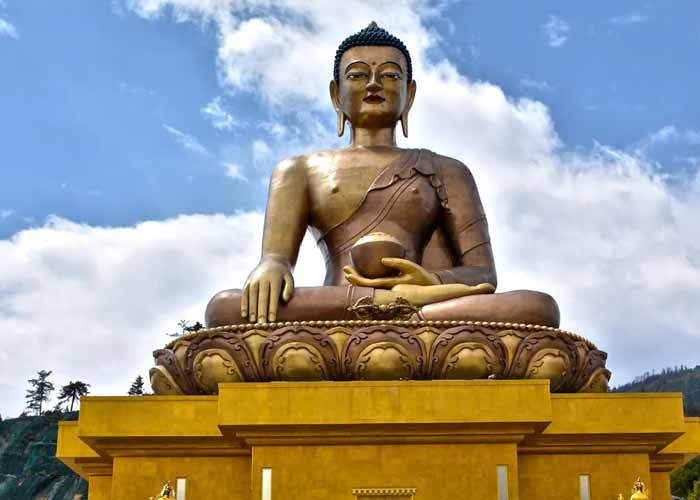
Buddha Dordenma is the massive sculpture of Lord Buddha on top of the hill of Thimphu. The statue was constructed to celebrate sixty years of the fourth King Jigme Singye Wangchuck. The statue houses more than 1100,000 smaller Buddha statues made out of bronze, and gilded in gold. It is the Great Buddha Dordenma frequently called ‘Buddha’s Point is located in the remains of Kuensel Phodrang. The visitor can enjoy a breathtaking perspective of Thimphu valley from the Buddha’s viewpoint. It’s among the biggest Buddha’s statues in the world, with a height of the height of 169 feet (52 meters).
Taktsang Monastery ‘Tiger’s Nest’
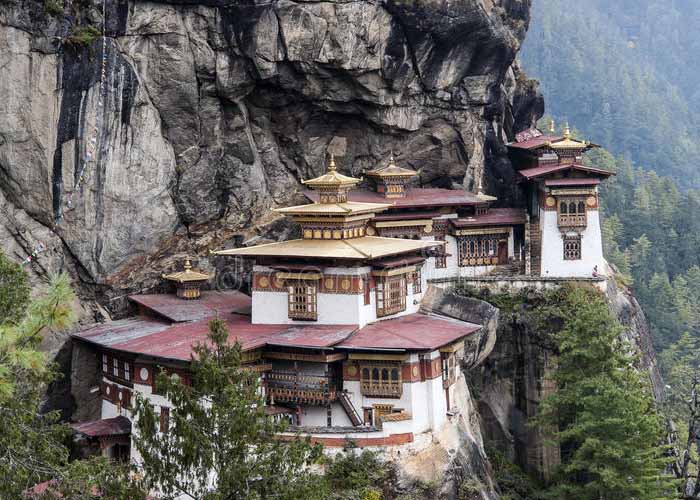
Near the outskirts Paro town located on the outskirts of Paro town Taktsang Monastery which is more often referred to as “Tiger’s Nest’. The name is derived from the fact that Guru Padmasambhava is believed to have was ascended on the back of a tigress in the 8th century Tibet and sat in the site. The monastery is located in a cliff with a vertical face, defying the engineering logic at 3,120m. A Bhutan trip is not complete without an excursion up to Taktsang Monastery.
Phobjikha Valley, Gangtey
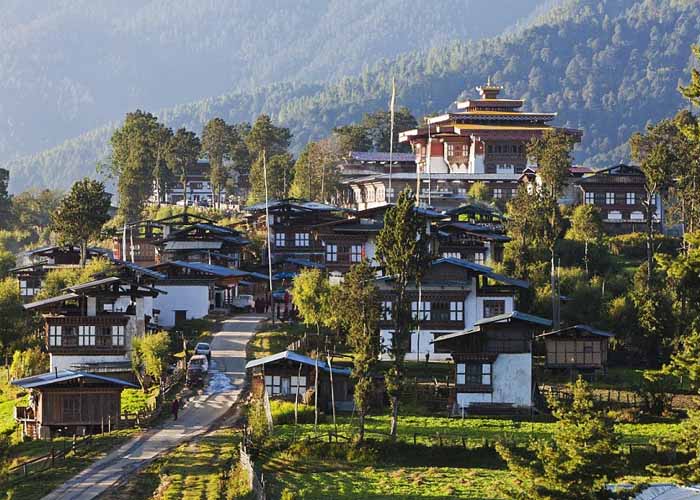
Phobjikha Valley in Gangtey is one of the most stunning glacial valleys of Bhutan. It is a huge U-shaped valley that lies in central Bhutan. It is home to one of the most impressive old Buddhist monastery ‘Gangtey Gompa’ (or monastery)’. One of the main attractions in the Phobjikha Valley is the Black-Necked-Cranes which fly over across the Tibetan plateau in the winter months. They arrive in the final week of October. Upon their arrival, they circulate Gangtey Monastery at least three times. They repeat the procedure before taking off for Tibet.
Punakha Dzong
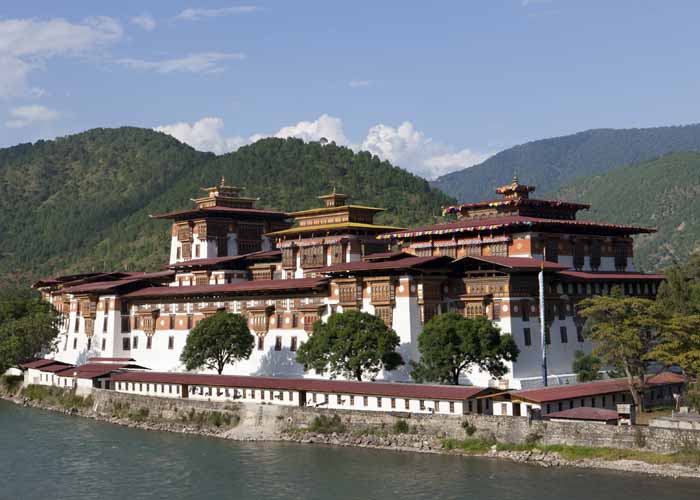
Punakha Dzong arguable is one of the most beautiful monasteries of Bhutan. Its beauty is particularly in spring, when jacaranda trees in the lilac color bring lavish sensuality. This monastery was used as the capital and the seat of government up to the mid-1950s, and all of Bhutan’s monarchs were presented in this place. Punakha Dzong is also the central administrative centre of Punakha District located in Punakha. It is the second-oldest as well as the second largest monastery of Bhutan and was constructed in 1637 and 1638.
Dochu la pass
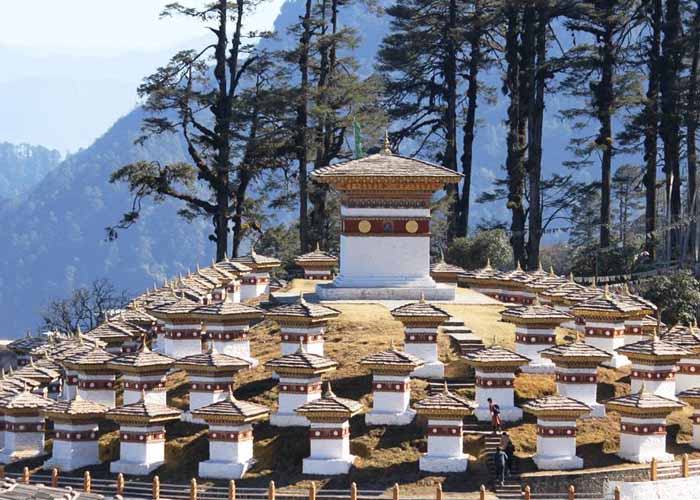
Dochu la pass, which is 3,050 meters lies between Thimphu from Paro. The pass is awe-inspiring with a breathtaking view of the mountains of eastern Tibet. There are also the 108 memorial stupas also that are known as “Druk Wangyal Chortens” erected on top of a small hill overlooking the pass that was built by the Ashi Dorji Wangmo who is the Queen Mother’s oldest child. A monastery also exists on the pass, which is called”the Druk Wangyal Lhakhang (temple) constructed in honor of Druk Wangyal, the 4th Druk Gyalpo (head of Bhutan’s state Bhutan). The annually Dochula Druk Wangyel Festival is located on the open field in front of the temple’s front yard.
Paro Rinpung Dzong
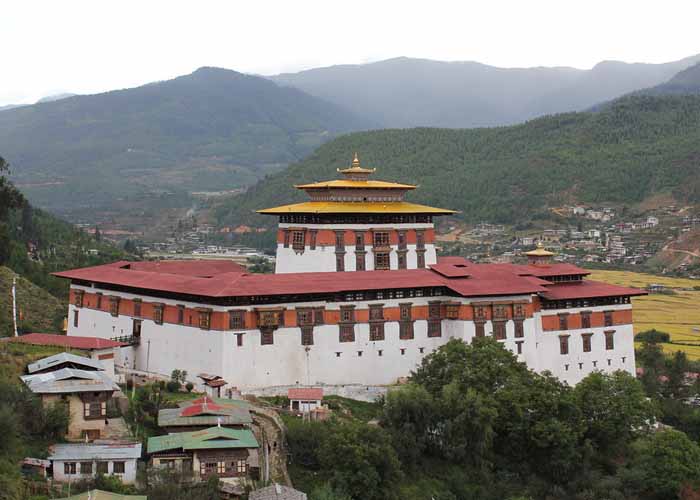
Paro Rinpung Dzong is the largest monastery in the Paro District. This magnificent monastery is home to District Monastic Body and government administrative offices of Paro Dzongkhag. Paro Rinpung Dzong is listed as a possible site on Bhutan’s Tentative List for UNESCO World Heritage Sites. This monastery represents the best representation of Bhutanese architectural style and is located on the top of a hill. A traditional wooden bridge known as Nyamai Zam crosses over the Paro Chhu ‘river’ to reach the monastery.
Kyichu Lhakhang, Paro
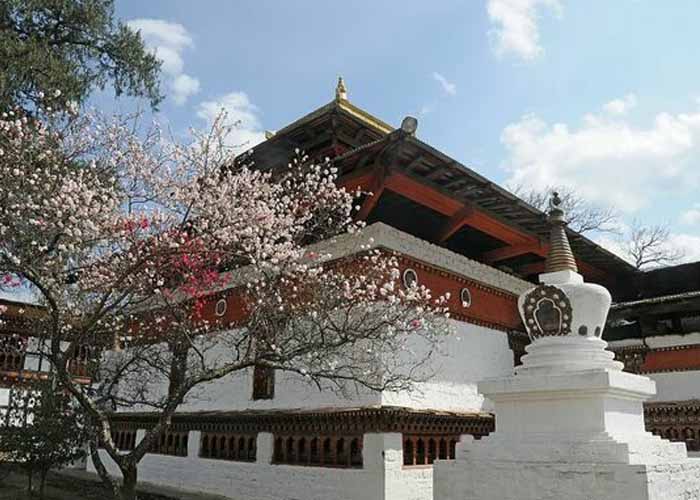
Kyichu Lhakhang is one of the most ancient shrines in Bhutan. It was established during the 7th century under the Tibetan King Songtsen Gampo. It is possible to see elderly pilgrims always jogging through the temple, spinning its numerous prayer wheels. When you walk into the temple and enter the courtyard that is its interior, one will be able to observe in the right of the entrance a mural that depicts the King Gesar of Ling, the well-known Tibetan warrior-king whose epic poem is believed to be the longest poem in the world. The inside hall of the stunningly dramatic principal Jowo Lhakhang holds the valley’s most valuable treasure the original statue of Jowo Sakyamuni.
Chimi Lhakhang fertility temple
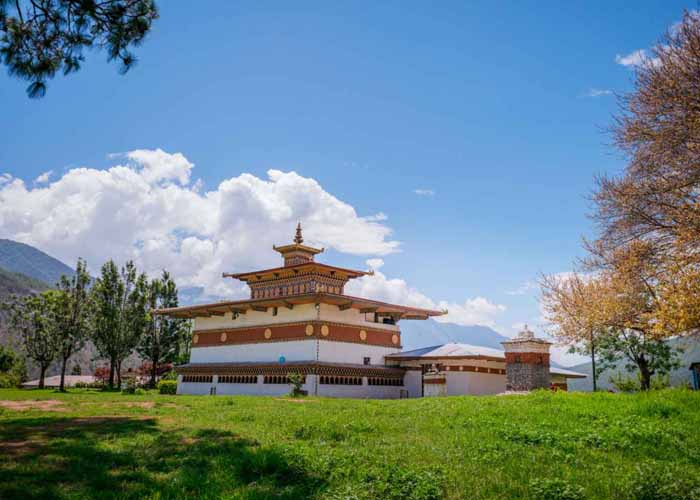
Chimmi Lhakhang is en-route Thimphu to Punakha after crossing Dochu la pass located near the village of Lobesa. The temple is situated on an elongated hillock that was built in 1499, and is dedicated to Drukpa Kunley , the divine madman’, the famous saint who was a maverick from Bhutan. He was known as the “Mad Saint” because of his unconventional methods of teaching Buddhism through singing, humor and outrageous behaviour. He advocated using the phallus symbol as murals on walls as well as flying wooden phalluses carved with a wavy design on the top of houses. The temple contains the original symbol made of wood the phallus Kunley took from Tibet. The phallus made of wood can be used as a blessing for those who visit the monastery for journeys of pilgrimage, especially women who seek blessings to have children.
Trongsa Dzong
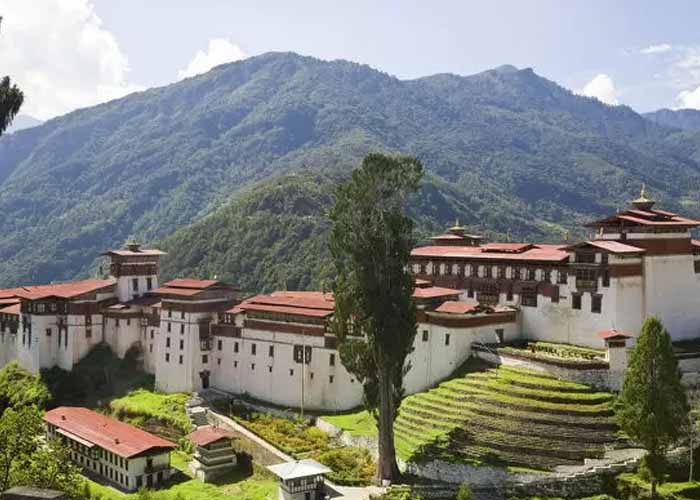
Trongsa Dzong is located on the way from Gangtey to Bumthang in the small town of Trongsa. It is actually a fortress of the monastery and the biggest Dzong fortress of Bhutan. This massive monastery is a significant administrative structure, serving as the central office of the administration of the Trongsa District. The monastery is listed as a potential site on Bhutan’s Tentative List for UNESCO World Heritage Sites. There are 23 distinct Lhakhangs or ‘temples’ within the monastery. Five days of the Trongsa tsechu festival occurs in the monastery’s northern courtyard in the months of December and January.
Bumthang
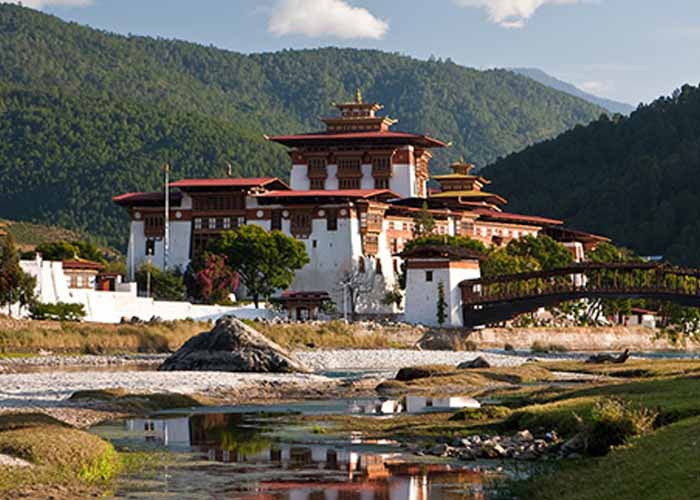
Bumthang is believed to be the cultural capital of Bhutan where a variety of old monasteries and temples are situated. The most holy place within Bhutan the place where it is believed that Bhutan’s “patron saint”, Guru Rinpoche (Padmasambhava) was a meditator. The oldest temples and monasteries located in Bumthang include Kurje the monastery Jambey Lhakhang, Tamshing Lhakhang and Jakar Dzong. Jambey Lhakhang was built by the Tibetan King Songtsen Gampo in the 7th century. Tamshing Lhakhang, founded in 1501 by Pema Lingpa. Jakar Dzong was built on the site of an earlier temple founded by the Ralung Hierarch Yongzin Ngagi Wangchuk (1517-1554). The monastery is situated on the ridge that overlooks Jakar town, which is located in Bumthang’s Chamkhar valley in Bumthang. The Bumthang district Bumthang comprises four main valleys i.e. Ura, Chumey, Tang and Choekhor. The best reason to visit Bumthang is to find out more about the culture of Bhutan, the history, traditions and heritage of Bhutan.
Hoshizora Treks and Tour provides these Bhutan Cultural Tour in addition to other treks and tours such as Druk Path Trekking. If you’d like to modify the itinerary we have provided or have any questions we can help you. Please get in touch with us.


